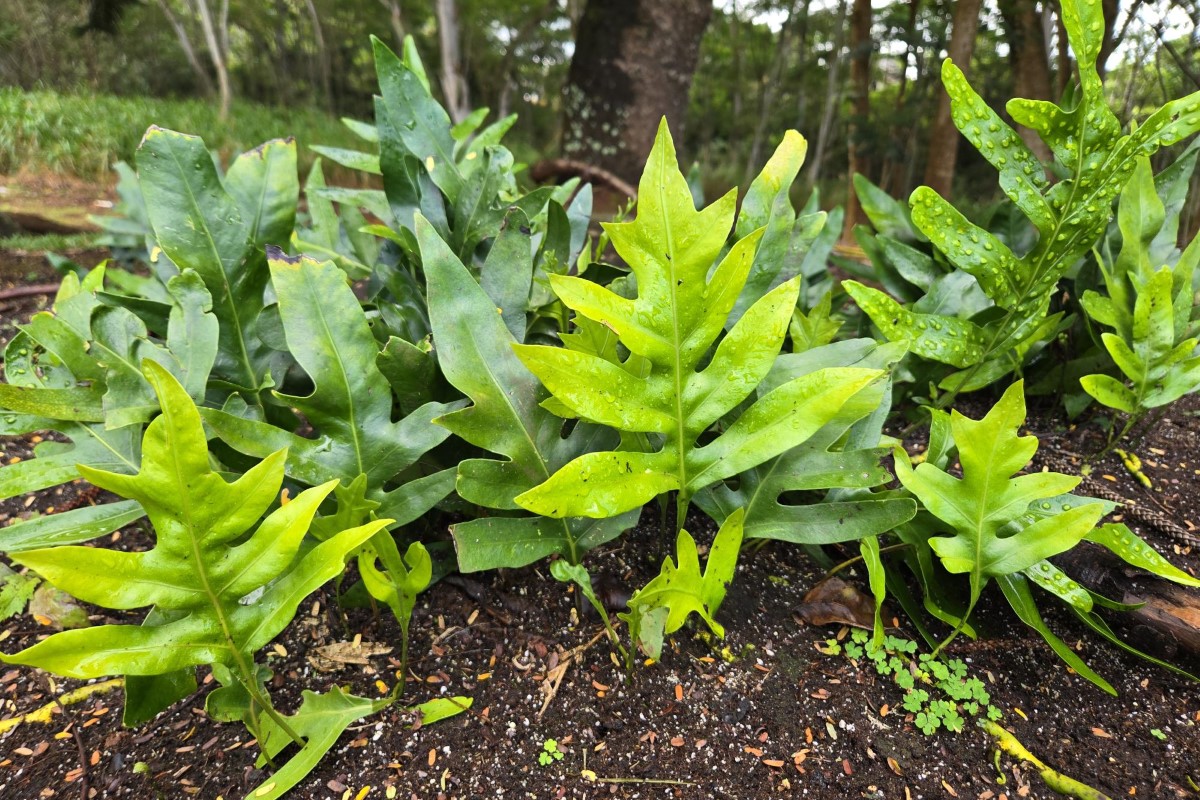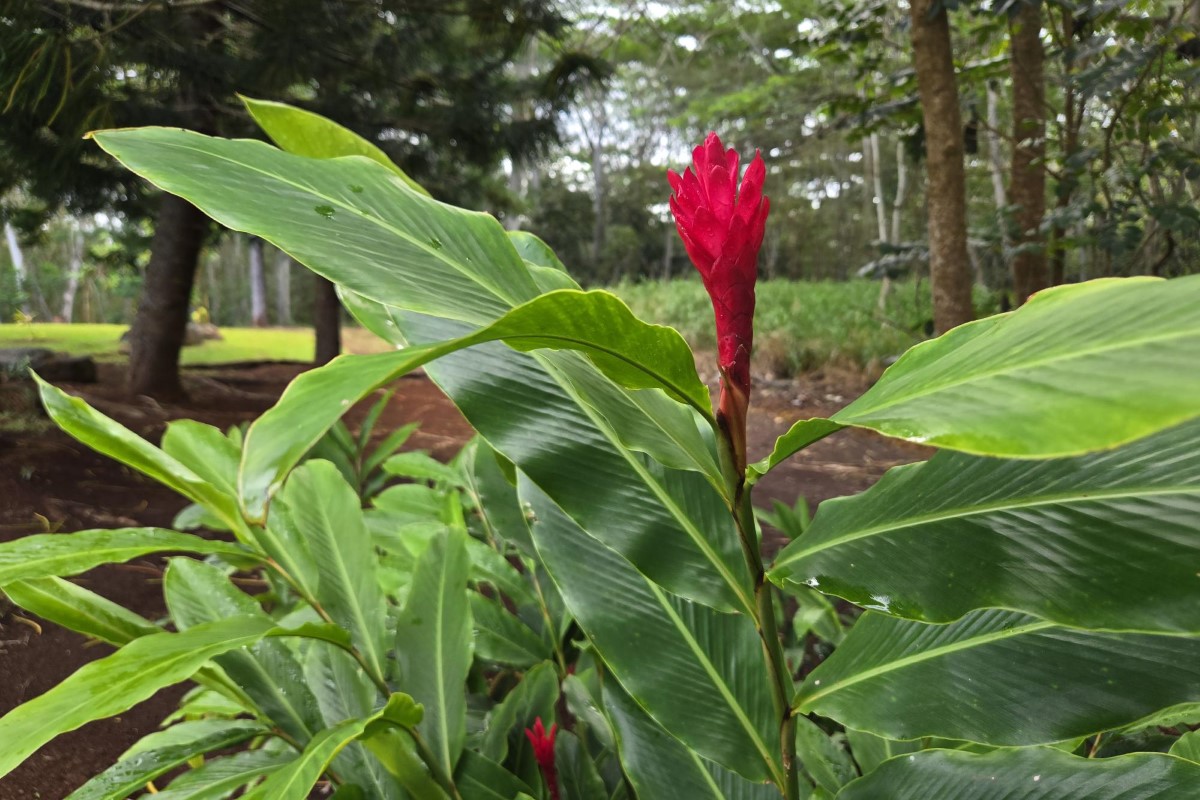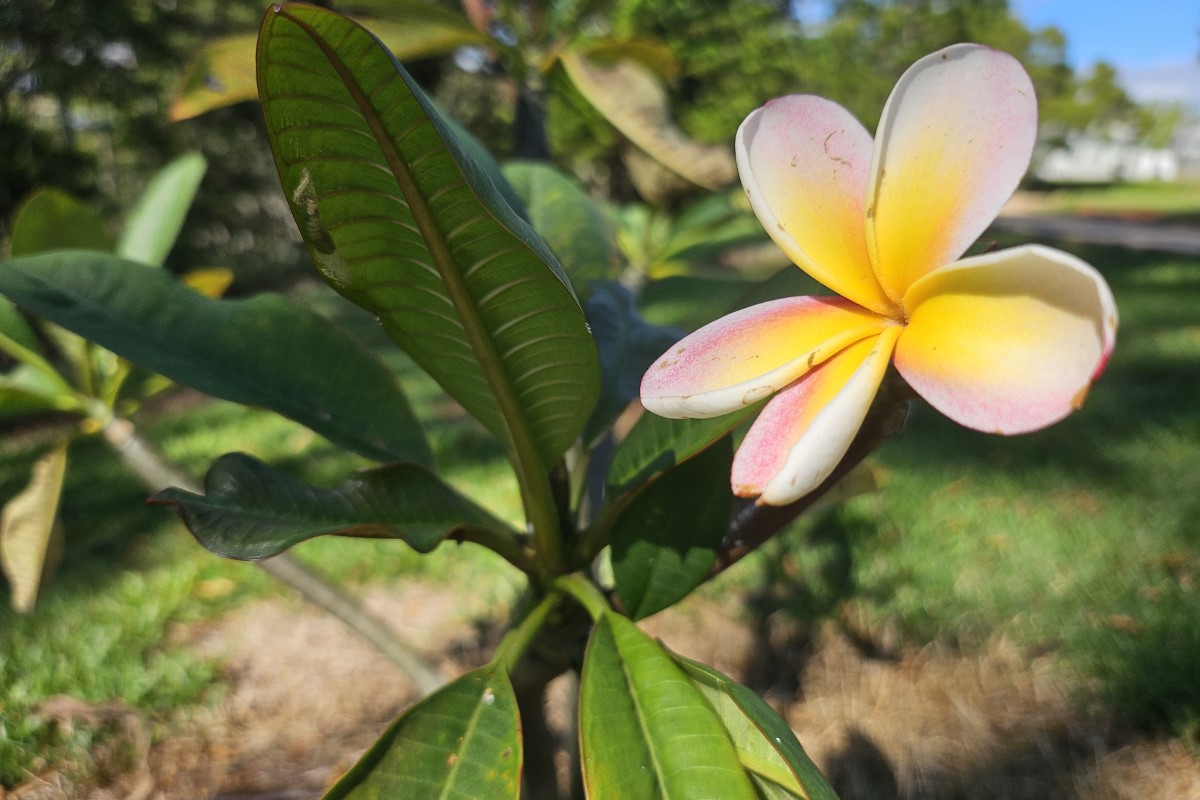Nature Walk – Zone 4
Hawaii’s native flora is as unique as it is diverse, with approximately 1,400 vascular plant taxa native to the islands, and nearly 90% of these are found nowhere else in the world. The rich tapestry of plants includes the native Akia plant, the Pohinahina, used medicinally by native Hawaiians, and the Kupukupu fern used in traditional Hula, are just a few examples of the islands’ botanical treasures. Conservation efforts are crucial to protect these species from threats such as habitat loss, invasive species, and climate change. Initiatives include surveying historic ranges, augmenting wild populations, and establishing new ones in safe harbors. The MTA Nature Walk was developed to highlight these plant species and other important fauna of Hawaiian culture and landscapes.
Zone 4 Plants

Laua`e Fern
The Lauae fern, known scientifically as Microsorum scolopendria, is a species with a rich presence in Hawaii’s cultural and natural landscapes. This fern, introduced from Western Australia, has become a common sight across the Hawaiian Islands, thriving in various environments from lava fields to lush forests. Its deeply lobed fronds emit a delicate almond fragrance, which has earned it the nickname ‘maile-scented fern.’ In contrast, the native Hawaiian Lauae, Microsorum spectrum, is a rarer species that prefers the moist, low-elevation forests and is celebrated for its unique scent, which is woven into traditional chants and songs. Both ferns hold significant cultural value, historically used by Hawaiians to perfume their kapa cloth and craft lei, symbolizing a connection to the land and its heritage. The distinction between these two ferns is essential for understanding Hawaii’s biodiversity and the cultural practices that have evolved with these plants.

Red Ginger
The Red Ginger, known scientifically as Alpinia purpurata, is a vibrant and lush plant native to the southwest Pacific islands but has found a welcoming habitat in Hawaii. In Hawaii, the Red Ginger thrives in the humid and warm climate, contributing to the islands’ lush tropical landscapes. It’s not just the aesthetics that make this plant special; it’s also a practical choice for gardeners. The Red Ginger is relatively easy to care for, requiring partial shade, indirect light, and consistently moist soil conditions to flourish. Its striking red bracts, which are often mistaken for flowers, are actually modified leaves designed to protect and attract pollinators to the true flowers within. These bracts make the Red Ginger a popular choice for floral arrangements, adding a splash of tropical vibrance to bouquets. In Hawaii, the Red Ginger is not only a beautiful addition to gardens but also holds commercial value, with its flowers being grown for sale, particularly in the Hamakua area. Despite its beauty, it’s important to note that like many non-native species, the Red Ginger can become invasive, so it should be cultivated responsibly to maintain ecological balance.

White and Yellow Ginger
The Hedychium coronarium, commonly known as the White Ginger Lily, is a fragrant tropical flower that has found a hospitable environment in Hawaii. Originally from the Eastern Himalayas, this plant has naturalized in Hawaii and is often associated with the islands’ lush landscapes. Its white and yellow blooms are not only a feast for the eyes but also emits a delightful scent that can perfume an entire garden. The White Ginger Lily thrives in Hawaii’s warm climate and can be seen blooming from late summer to early fall. Each flower lasts about a day, but the plant produces several hundred flowers over a six-week period, ensuring a continuous display of beauty and fragrance. While it is a popular ornamental plant, it’s important to note that in some regions, it is considered invasive due to its ability to form dense thickets via underground rhizomes. Despite this, the White Ginger Lily remains a beloved feature in many Hawaiian gardens, contributing to the state’s reputation for beautiful and exotic flora.
